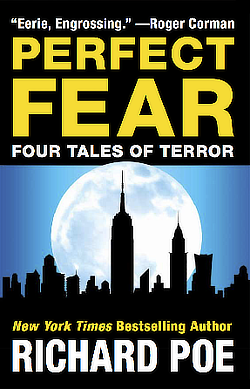The New York Times Embraces the Dark Side
|
by Richard Poe Friday, May 31, 2002 12:00 am Eastern Time |
Archives 1 Comment |
DESPITE ITS HORRORS, the 9-11 attack had a bright side. It temporarily transformed New York into a city so wholesome and normal, it almost seemed to have become part of America. Stars and stripes festooned every street and storefront. Hillary Clinton was booed off the stage at Madison Square Garden. Cops and firemen were lionized as heroes.
But it was too good to last. New York’s cultural elite have struck back. Once more, New Yorkers have given our countrymen reason to pity, hate and despise us. Once more, we have defecated in America’s proverbial livingroom.
I refer to the perverse and inexplicable hostility with which New York film critics have greeted George Lucas’s Star Wars: Episode II – Attack of the Clones.
“It is not really much of a movie at all,” snorts critic A.O. Scott, in the May 10 New York Times. “Mr. Lucas seems to have lost his boyish glee. As the [special] effects have grown more intricate and realistic, their ability to yield pleasure and astonishment has diminished.” Scott continues:
“Mr. Lucas… is, at best, a haphazard storyteller… Yes, the battle scenes and the monster rallies are superior to anything in The Mummy, The Mummy Returns or The Scorpion King, but that lowbrow franchise at least has the good sense to acknowledge its silliness. Attack of the Clones, in contrast… lumbers along in the confining armor of bogus wisdom.”
At this point, most readers who have seen Attack of the Clones are probably wondering if Mr. Scott watched the same movie. It appears that he did. But New York intellectuals are not like the rest of us.
The key to Scott’s perverse analysis lies in the word “lowbrow.” Among New York’s cultural elite, “lowbrow” is synonymous with “popular,” “entertaining,” “engrossing,” “brilliant,” “cathartic” and “beautiful.” Attack of the Clones is all of these things. Therefore it is “lowbrow.”
Had Scott lived in Elizabethan London, he might have called William Shakespeare a “lowbrow.” After all, Shakespeare’s plays reached a mass audience. They made money too.
Homer composed his Iliad not to glean praise from The New York Review of Books, but to perform — for pay — before crowds of lusty, half-literate warlords in wine-soaked banquet halls.
Like George Lucas, Homer worked with simple themes that his audience could understand. In the Iliad, he managed to compose 15,673 dactylic hexameter verses about a pair of jealous warlords brawling over who gets to sleep with the slave-girl Briseis.
It was lowbrow material, to be sure. But Homer reached deep into his soul and charged his simple tale with magic.
George Lucas has done the same.
In 1964, my parents took me to see Michelangelo’s Pietá at the New York World’s Fair. I was five years old. Before that somber mass of stone, I felt as if I had stepped into the living presence of the Mother of God.
Michelangelo did not carve the Pietá to tickle the jaded tastes of New York art critics. He carved it for the masses, so simply and frankly that even a five-year-old could grasp it.
Attack of the Clones is filled with memorable scenes, but one stands out with special grandeur, as powerful, in its way, as my first glimpse of the Pietá.
Our heroes are brought in chains to a vast, hive-like coliseum, a structure as weirdly imagined as a Gaudi cathedral. What happens next cannot be described. Suffice it to say that an epic, digitized battle breaks out between Jedi knights, battle droids and a menagerie of beasts so hideous they can evoke only the laughter of the damned.
In the midst of this carnage, along comes poor C-3P0, his head accidentally welded onto the body of a battle droid.
“Die, Jedi dogs!” he cries, in his faux British butler accent, as he blasts away at the good guys.
I laughed so hard, I thought my ribs would crack and my eyeballs would pop from my skull. It wasn’t just the joke about C-3PO. It was the sheer hallucinogenic splendor of so much beauty, terror, shock and absurdity crammed into so small a mental space — an outpouring of insanity as mind-bending as a thousand Dali canvasses sprung to life.
That is art, Mr. Scott. It doesn’t get any better than that.
Scott says that the film “lumbers along.” Well, it held me spellbound for two hours and twelve minutes straight. When the final credits flashed on the screen, I could hardly believe it had ended so soon.
I guess I’m just one of those lowbrows.
Cross-posted from NewsMax.com 05.31.02








See reader comments at FreeRepublic.com:
Posted on 05/31/2002 4:33:13 AM PDT